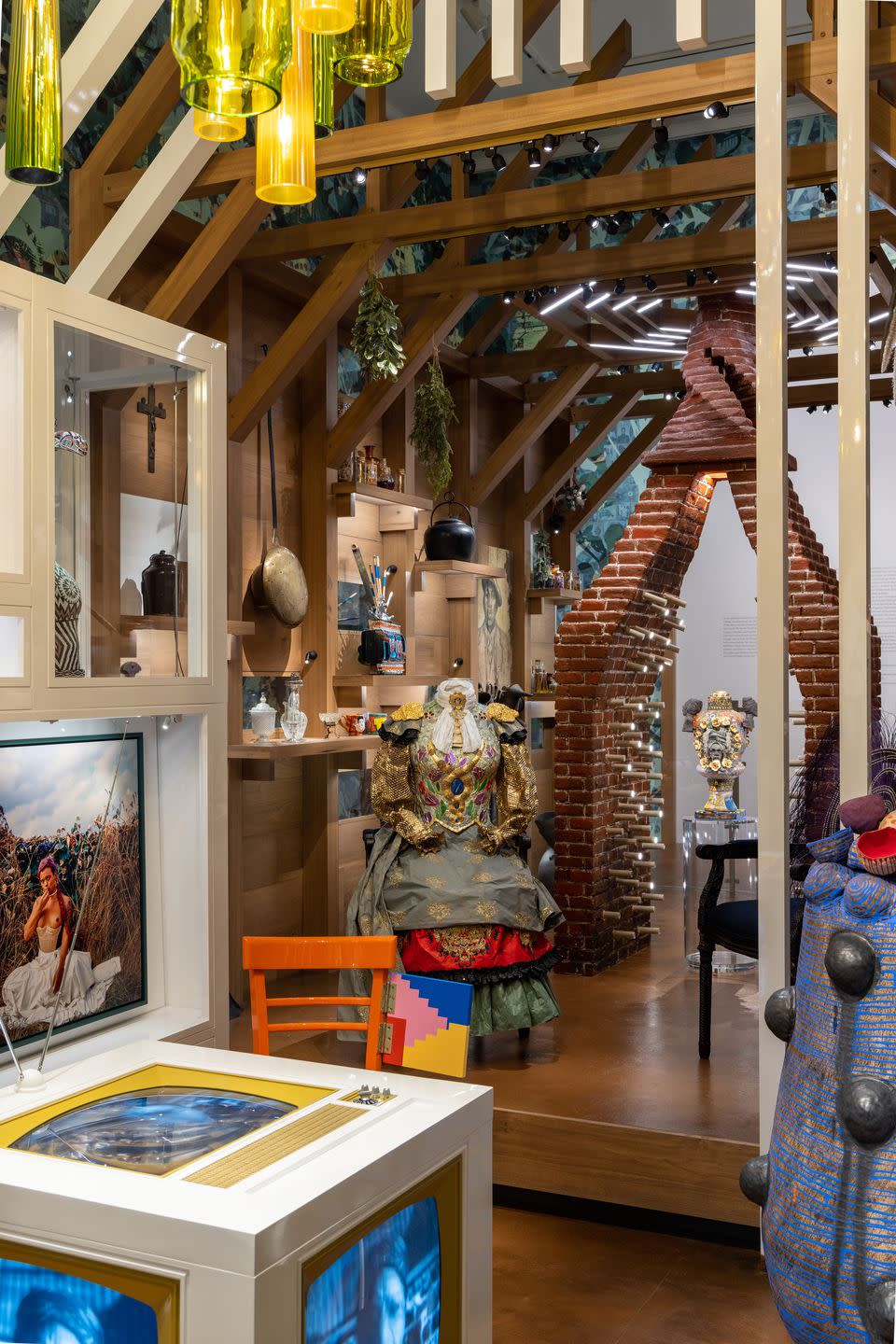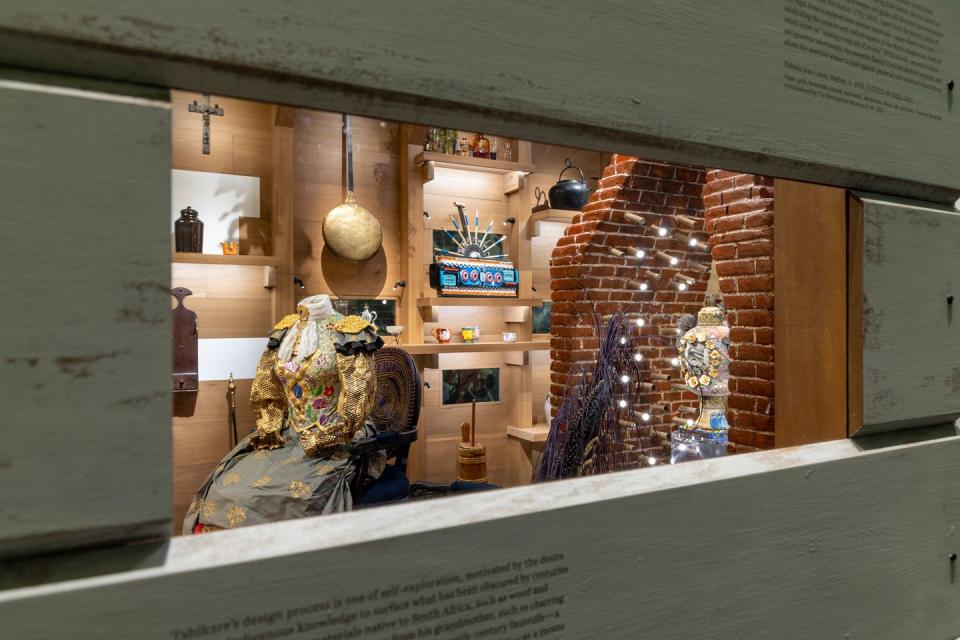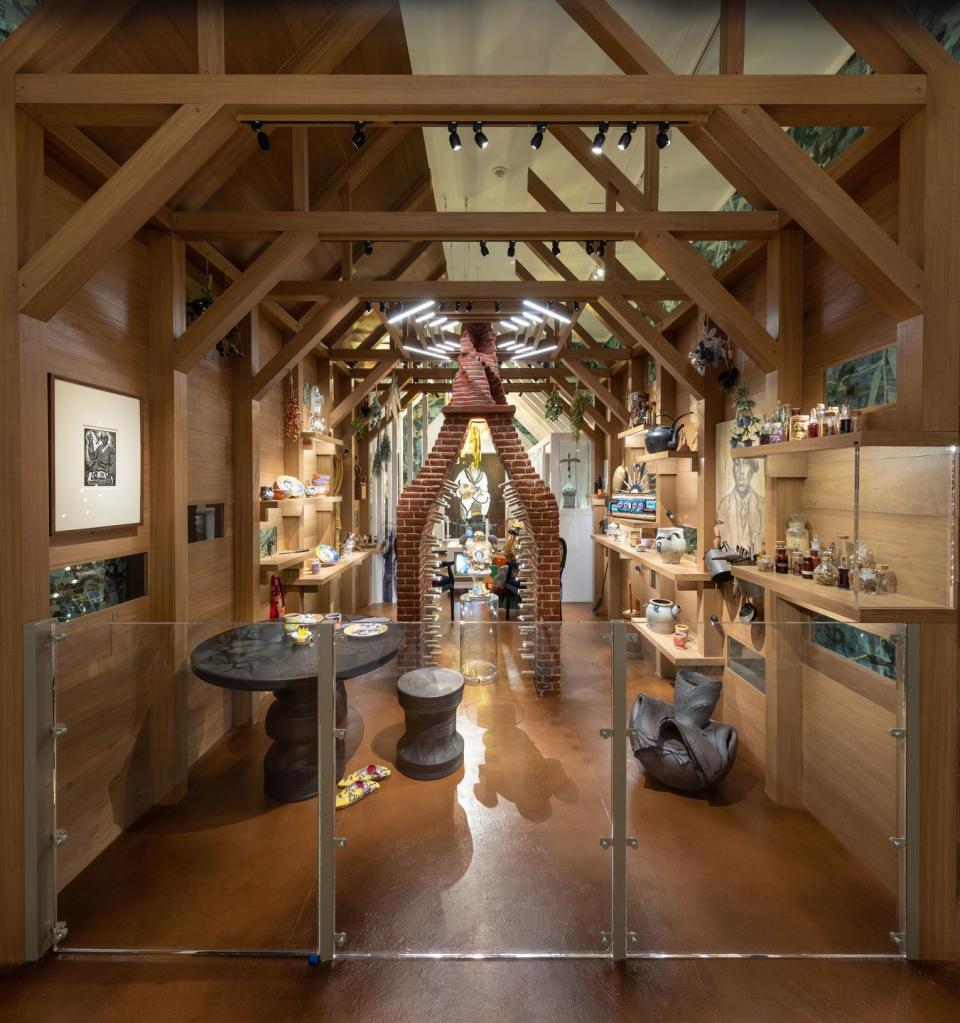A New Met Museum Exhibit Reimagines the Town That Was Destroyed to Make Way for Central Park
- Oops!Something went wrong.Please try again later.
Pay a visit to the "period rooms" at most museums, and you'll find assemblages of furniture, decor, and objects from a particular time period, all arranged to suggest you've stepped into a time capsule from a specific year in the past. The newest period room at New York's Metropolitan Museum of Art, though, takes a different approach. Titled Before Yesterday We Could Fly, the new addition to the American Wing is a reimagining of a home in Seneca Village, the largely Black community on Manhattan's Upper West Side that thrived in the mid 19th-century before being seized by eminent domain in 1857 and razed to make way for what is now Central Park (part of a pattern of land seizure in Black and poor neighborhoods across the country). Although several items in the room stem from the findings of a 2011 excavation of the site, the room, unlike traditional period rooms, doesn't speak to one specific era. Rather, it builds upon the history of Seneca Village to tell a broader story of Black culture through the lens of Afrofuturism, the philosophy that explores alternative retellings and imaginings of the African diaspora.
"Most period rooms aren't real spaces—they're assemblages of various items from the period that give a veneer of authenticity," explains Sarah E. Lawrence, The Met's Curator in Charge of the Department of European Sculpture and Decorative Arts with a focus in period rooms. "But here, we thought, instead of using that veneer to conceal the fiction beneath these rooms, how can we embrace that fiction?"

To answer this question, The Met turned to Hannah Beachler, the production designer best known for bringing to (screen) life the fictional city of Wakanda in Black Panther (that work won her an Academy Award, the first ever given to a Black designer for Best Production Design). Beachler led a team of five curators to create a layered, multimedia, time-jumping exhibit that speaks to the breadth of the Black experience in America as well as across the African diaspora.
"It was about bringing past and future into one space for a community to hold onto," says Beachler of the exhibition. "I wanted it to bring in the diaspora and different perspectives on being Black."
That's where Afrofuturism comes in: "African people were thinking about flight and fantasy in these ways that set the stage for Afrofuturism," points out consulting curator Dr. Michelle D. Commander, an associate director at New York's Schomburg Center for Research in Black Culture, who has written extensively on slavery and Black mobility. Of course, the erasure of much of the Black experience—both through violence and suppression in real time and later through the retelling of history—make for the presentation of one "complete" storyline both complicated and oversimplified.

So instead, following the model of Afrofuturism, the curators wove multiple storylines through a single space: The foundation of the room is a structure with a central hearth, modeled after ones found during the Seneca Village excavation. Perforating the structure's clapboard walls are a series of plexiglass windows, which provide views to the many objects within.
"The windows symbolize never seeing the whole picture," explains Beachler. "I don’t know my whole ancestry. But you have to look through the past to see the future and through the future to see the past. There’s a wonderful intersection."
It's an intersection that's evident in the objects within the structure, which range from dried plants and spices that nod to the agricultural work of George Washington Carver to 18th-century vessels and household objects to contemporary ceramics by Roberto Lugo; slippers in Harlem Toile by Sheila Bridges; furniture by Ini Archibong, Atang Tshikare, and Jomo Tariku, and digital work by Jenn Nkiru.
The structure itself also recalls multiple moments in Black history: While the clapboard style is indicative of homes in Seneca Village, "it was important to me that the nails were iron," Beachler says of the supports, visible along each of its edges, which nod to the chains of slavery. "They represent chains, they represent the people who were not able to flourish, but they are the structure holding it all up."

Swathing the walls in the room surrounding the structure is a mural—titled Thriving and Potential, Displaced (Again and Again and...)—by Nigerian artist Njideka Akunyili Crosby comprised of survey maps of Seneca Village overlaid with images of some of its notable residents and symbols of African American culture (like the Okra plant, a staple in Southern cooking that was introduced to the American South by enslaved people who brought it from Africa). It's a fitting backdrop to the amalgamation that defines the exhibit as a whole. "Each of these items is beautiful on their own, but together they tell their own story," says Beachler. And that may be a different story to every viewer: "It’s like when you put a film out into the world and everyone has their own view," she explains.
Ultimately, though, the exhibit's goal is to resurrect a history—or rather, many histories—that has been both literally and figuratively buried, and to retell, reframe, and re-celebrate it. "The idea was to bring a beauty to what was always thought of as being a slum or the ghetto," Beachler explains. "Retelling that narrative and allowing people to see the beauty that was always there." That beauty, she says, is symbolic of a familiar dichotomy in the Black experience. "Speak to any person in the Black diaspora and we have had to deal with both grief and joy together. But I wanted it to lead with joy and pride."
Related: Watch Jomo Tariku Create New Interpretations of Traditional African Furniture
Follow House Beautiful on Instagram.
You Might Also Like

